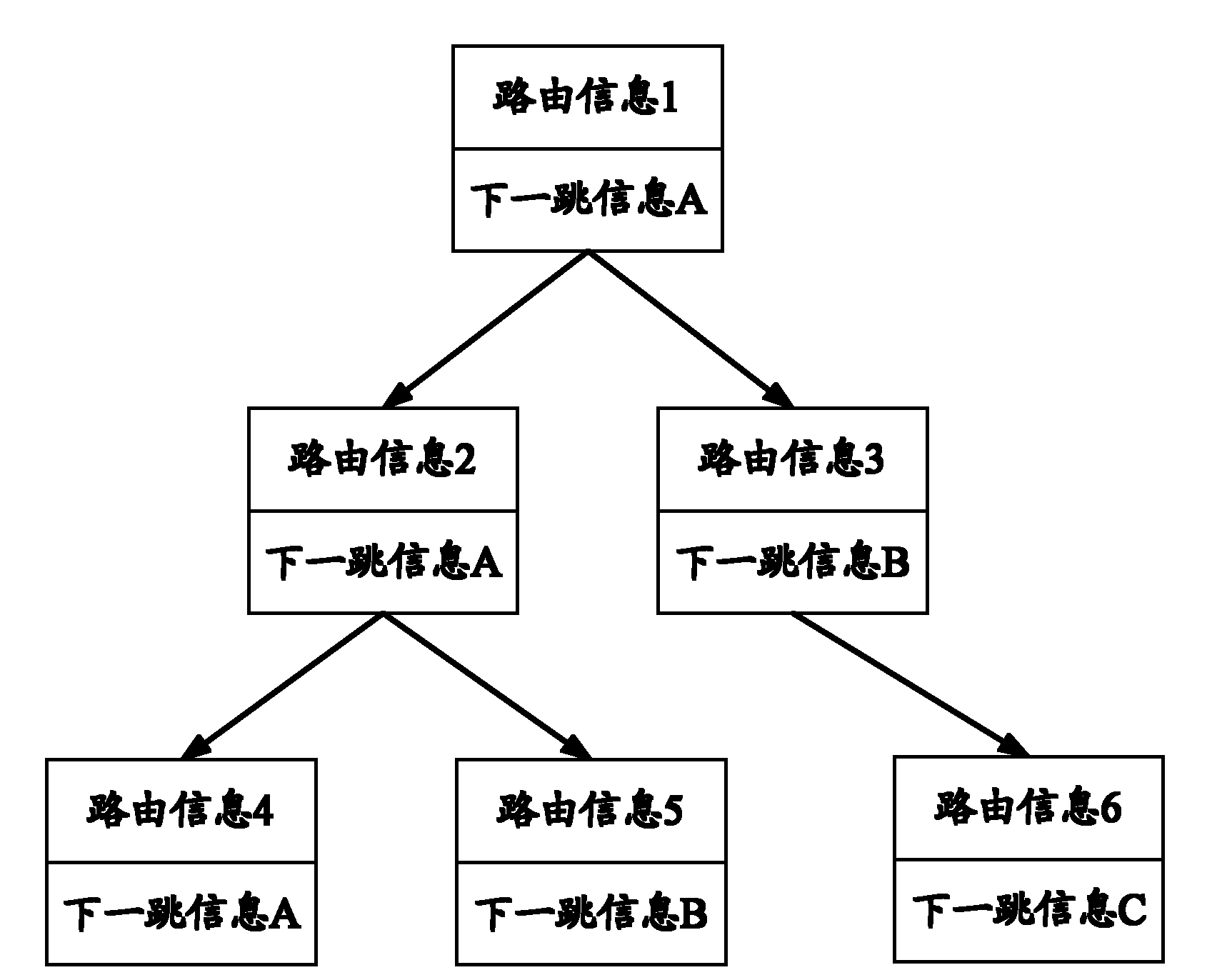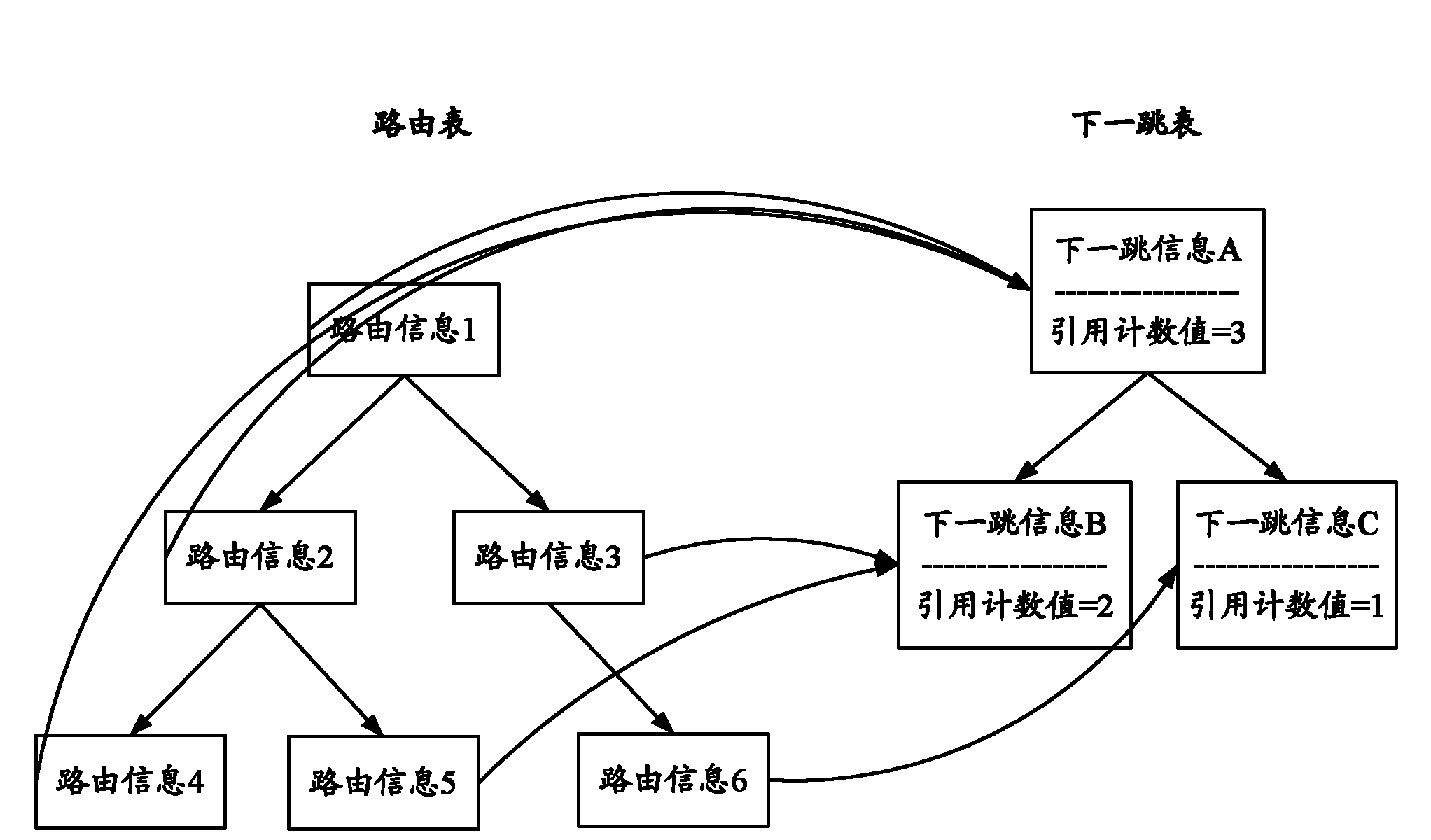Method and device for acquiring routing information
A routing and acquisition unit technology, applied in digital transmission systems, data exchange networks, electrical components, etc., can solve problems such as waste of memory resources, reduce resource consumption, improve processing efficiency, and reduce memory usage.
- Summary
- Abstract
- Description
- Claims
- Application Information
AI Technical Summary
Problems solved by technology
Method used
Image
Examples
Embodiment 1
[0060] In this embodiment, aiming at the situation of adding a new routing entry, the processing flow for updating the routing table and the next hop table of the routing device is described. The implementation process is as follows: Figure 4 shown, including the following steps:
[0061] Step 401: After obtaining the new routing entry, insert a new node into the routing table, and write the routing information of the new routing entry into the new node, and then perform step 402;
[0062] Here, the way for the routing device to obtain the routing entry is exactly the same as the way for the routing device to obtain the routing entry in the prior art, for example: the routing device can obtain the routing entry according to the routing configuration information of the network management, and the routing device can also obtain the routing entry according to the routing protocol , by learning the routing entries, the routing device can also receive the routing entries broadcast...
Embodiment 2
[0073] This embodiment describes the processing flow of updating the routing table and the next hop table of the routing device for the situation of deleting the routing entry. The implementation process is as follows: Figure 5 shown, including the following steps:
[0074] Step 501: When a routing entry needs to be deleted, determine whether there is a routing entry corresponding to the routing entry that needs to be deleted in the routing table, if yes, perform step 502, otherwise, perform step 507;
[0075] Here, the timing to delete a certain routing entry is exactly the same as the timing for deleting a routing entry in the prior art. For example, if the network manager needs to delete a routing entry, the configuration information of the routing entry will be deleted. According to the deleted configuration information, the routing entries that need to be deleted can be obtained. The routing device can also obtain the routing entries that need to be deleted through learn...
PUM
 Login to View More
Login to View More Abstract
Description
Claims
Application Information
 Login to View More
Login to View More - R&D
- Intellectual Property
- Life Sciences
- Materials
- Tech Scout
- Unparalleled Data Quality
- Higher Quality Content
- 60% Fewer Hallucinations
Browse by: Latest US Patents, China's latest patents, Technical Efficacy Thesaurus, Application Domain, Technology Topic, Popular Technical Reports.
© 2025 PatSnap. All rights reserved.Legal|Privacy policy|Modern Slavery Act Transparency Statement|Sitemap|About US| Contact US: help@patsnap.com



